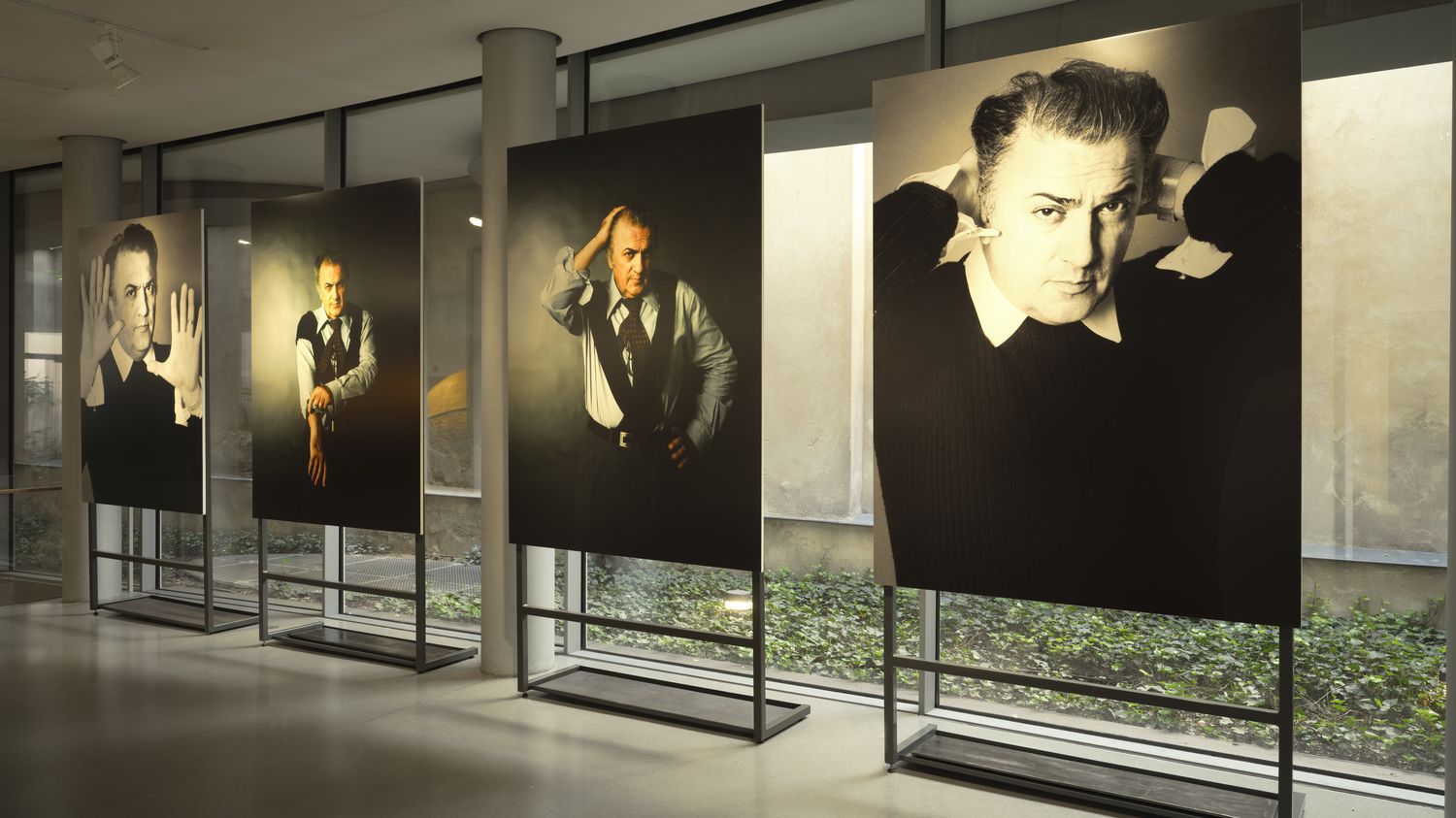The Pathé-Jérôme Seydoux foundation is hosting the event until the end of January, and presents numerous texts or drawings by the great Italian filmmaker, director of “La dolce vita”, “La strada” or “Huit et demi”, who died in 1993 .
To say that Federico Fellini was a great artist coupled with a hell of a character, sometimes angry, is a banality. What is less, banal, are his numerous drawings, logbooks, and photos of filming presented in the exhibition which illustrate his creative process, his way of considering his art and cinema in general.
And you have to see him mime, precisely and almost obsessively, what he expects from his actors.
“Fellini, it’s such a huge continent that you can be touched by many things visible here”
Stéphanie Salmon, co-curator of the exhibitionat franceinfo
And the co-curator of the exhibition clarified: “But I think what I personally prefer are these nearly 70 drawings made on set, sort of scribbles with which we feel that he is having fun with his collaborators. But I would also cite his logbook to its adaptation of Casanova in 1976, who expressed all the aversion he could have had for the subject and its actor Donald Sutherland. A document that Fellini had torn up, but of which we can present a few pages and which also tells the story of the film.”

A cinema legend less known to young people
The entire ground floor of the building is dedicated to The good life, a cult film from 1960 and undoubtedly the filmmaker’s best known. We can also come across the costumes of Casanova or Satyriconor the drawings of Milo Mannara for the comic adapted from the aborted film The journey of G. Mastorna.
But if we “zoom out” a little, with several other masterpieces to his credit such as 8 and a half, Amarcord, La Strada Or Rome, it seems clear that Fellini remains a cinema legend, although not so obvious for the youngest, thirty-somethings and under, slips the co-curator of the exhibition.
“He’s a director, a non-American one at that, who has won five Oscars, there are quite a few in that case, I think, analyzes Stéphanie Salmon. But after his death in 1993 the films were less broadcast, he is a filmmaker who remains relatively little studied, and who is mentioned less often than, for example, Pier Paolo Pasolini. There is also a certain dispersal of the rights to his films between several distributors which perhaps also explains the difficulty of publishing Fellini box sets or organizing retrospectives. But if its messages and themes perhaps seem more distant from our current concerns, they remain absolutely major films and a real world in themselves.”
On December 1, the Pathé-Jérôme Seydoux foundation will host a study day on Fellini with several conferences, and the exhibition lasts until January 27.
